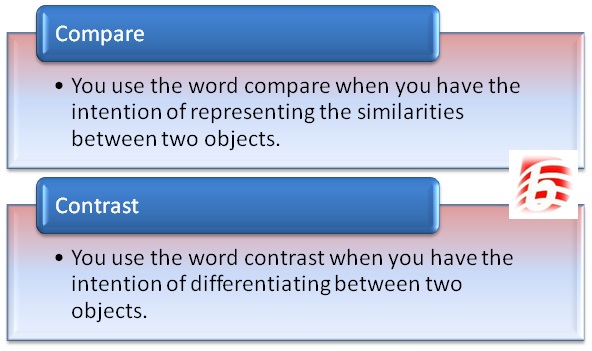Compare vs Contrast
Compare and contrast are two terms often used together when identifying similarities and differences between objects or things. These words have distinct meanings and uses, with origins in late Middle English and seventeenth-century French. Both compare and contrast can be used as nouns or verbs, and are followed by either ‘to’ or ‘with.’
What does Compare mean?
The verb compare means ‘to represent or describe similar or liken’ and is used when intending to show similarities between two objects. It can also mean ‘examining the qualities with a view to discover resemblances or differences.’ Compare can be used to show both similarities and differences between objects. The noun form of compare, comparison, is the basis of the figure of speech called simile. For example, “Her face is like the moon” is a comparison between the face and the moon.
What does Contrast mean?
The verb contrast means ‘to compare in respect to differences.’ It is used when differentiating between two objects, focusing mainly on their differences. For example, “Her face is more beautiful than the moon” contrasts the face and the moon by showing a difference between the two in terms of beauty.
Key Takeaways
- Compare is used to represent or describe the similarities between two objects, while contrast is used to differentiate between them.
- Both words can be used as nouns or verbs and are followed by either ‘to’ or ‘with.’
- Compare can show both similarities and differences between objects, while contrast focuses mainly on differences.
